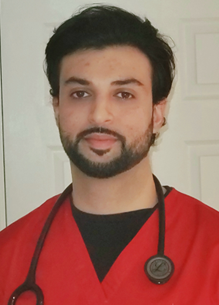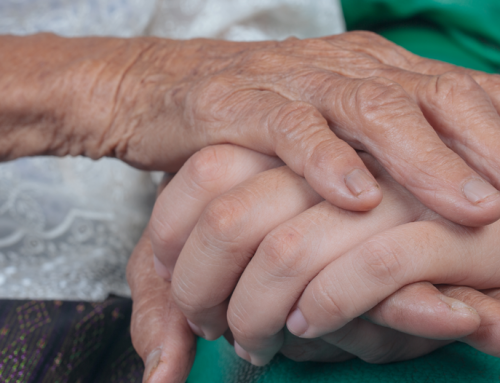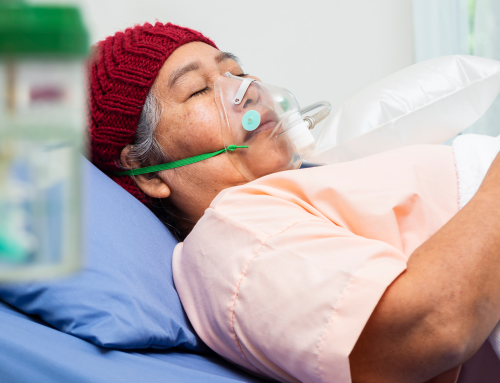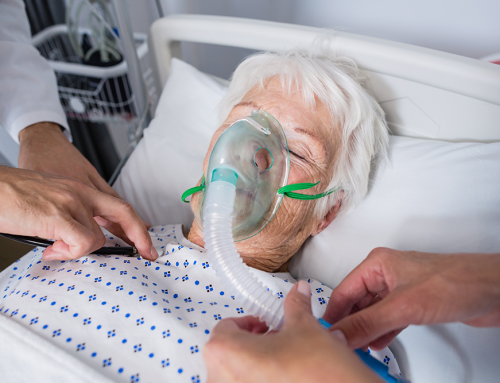
Submitted by: Harshaan Shah, HBSc SRT
Importance of Understanding Immune Responses to Viral Respiratory Infections
The global COVID-19 outbreak has brought increased attention to the study of viruses causing respiratory infections (C. Wang et al., 2020). It now becomes important to review the current treatment for respiratory infections caused by viruses of similar presentation, such as Influenza A and Respiratory Syncytial Virus (RSV) (Doherty, 2006). The current preventive measures include vaccination which utilizes artificial active immunity. However, the inevitable changes to the virus surface antigens makes this type of treatment effective for only a short time (Thomas, 2006). This challenge puts forth the need to look at different aspects of the body’s immune response to a viral respiratory infection. One such immune response is the presence of alveolar macrophages.
Studying the Expression of Alveolar Macrophage Nuclear Transcription Factors
Through the years, various studies have suggested that alveolar macrophages are important for regulation of the immune response triggered after contraction of a viral respiratory infection (J. Wang et al., 2012). However, the degree to which alveolar macrophages can modulate the body’s immune response to a viral pathogen is yet to be fully understood. In 2019, Huang et al., attempted to further understand this relationship by studying the expression of transcription factors in alveolar macrophages after contraction of the influenza A virus. It was shown that the nuclear transcription factor PPAR-γ is important in regulating the inflammatory immune response generated by alveolar macrophages (Huang et al., 2019). The experiment was conducted by deleting PPAR-γ in CD11c+ cells in macrophages in mice infected with the influenza A virus (Huang et al., 2019). CD11c+ cells are transmembrane proteins which are abundantly expressed in macrophages. This deletion resulted in then impaired generation of alveolar macrophages (Huang et al., 2019). However, there were additional effects caused by the deletion, such as higher than normal levels of expression of proinflammatory genes. Huang et al. (2019) also observed that PPAR-γ expression is important for establishing the tissue repair function in alveolar macrophages, after seeing an increase in tissue damage in the hosts with the PPAR-γ deletion versus the control subjects. This helped establish that low levels of PPAR-γ increases illness by causing the host to have a more severe inflammatory response (Huang et al., 2019). The same study was then conducted using RSV, which yielded similar results, showing that complete loss of PPAR-γ in alveolar macrophages resulted in an exacerbated inflammatory response (Huang et al., 2019). This suggests that studying the expression of nuclear transcription factors could allow for further understanding about the function of alveolar macrophages and their influence on the severity of an inflammatory response (Huang et al., 2019).
Further Knowledge About Immune Responses is Key to Finding a Cure
Over the last decade there have been numerous studies supporting the notion that alveolar macrophages are vital for initiating the immune response after the proliferation of a viral respiratory pathogen. In 2012, J. Wang et al., showed that alveolar macrophages are targeted during influenza infection, which further suggests that fatal viral infections occur more easily when alveolar macrophage populations are depleted (J. Wang et al., 2012). In the same year, Funk et al., similarly saw alveolar macrophages being targeted by viruses after comparing the prevalence in different types of lung cell in smokers that were infected by human coronavirus strain 229E (Funk et al., 2012). In 2014, Hartwig et al., also found that alveolar macrophage depletion caused adverse effects to hosts following pulmonary coronavirus infection, such as a decreased number of virus specific CD4 T-cells in the airways. In July 2020, Clua et al., took this concept even further by suggesting that immunobiotic treatments involving the generation of activated alveolar macrophages can be used to help control the immune response in individuals with respiratory infection.
It is clear that great progress has been made in terms of understanding the role of alveolar macrophages. Looking to the future, further understanding of the body’s immune response to respiratory viral infections will become key in helping develop novel treatments.
References
Clua, P., Tomokiyo, M., Tonetti, F., Islam, A., Castillo, V., Marcial, G., Salva, S., Takahashi, H., Kurata, S., Kitazawa, H., & Villena, J. (2020). The role of alveolar macrophages in the improved protection against Respiratory Syncytial Virus and Pneumococcal superinfection induced by the peptidoglycan of Lactobacillus Rhamnosus CRL1505. Cells, 9(1653), 1-27. https://www.mdpi.com/2073-4409/9/7/1653
Doherty, P., Turner, S., Webby, R., & Thomas, P. (2006). Influenza and the challenge for immunology. Nat Immunol 7, 449–455. doi: 10.1038/ni1343. PMID: 16622432. Retrieved from https://www.nature.com/articles/ni1343
Funk, C. J., Wang, J., Ito, Y., Travanty, E. A., Voelker, D. R., Holmes, K. V., & Mason, R. J. (2012). Infection of human alveolar macrophages by human coronavirus strain 229E.The Journal of General Virology, 93(3), 494–503. https://www.microbiologyresearch.org/content/journal/jgv/10.1099/vir.0.038414-0
Huang, S., Zhu, B., Cheon, I. S., Goplen, N. P., Jiang, L., Zhang, R., Peebles, R. S., Mack, M., Kaplan, M. H., Limper, A. H., & Sun, J. (2019). PPAR-γ in macrophages limits pulmonary inflammation and promotes host recovery following respiratory viral infection. Journal of Virology, 93(9) 1-15. doi: 10.1128/JVI.00030-19. Retrieved from https://www.ncbi.nlm.nih.gov/pmc/articles/PMC6475778/
Hartwig, S. M., Holman, K. M., & Varga, S. M. (2014). Depletion of alveolar macrophages ameliorates virus-induced disease following a pulmonary coronavirus infection. PLoS ONE, 9(3), 1–7. https://journals.plos.org/plosone/article?id=10.1371/journal.pone.0090720
Wang, C., Xie, J., Zhao, L., Fei, X., Zhang, H., Tan, Y., Nie, X., Zhou, L., Liu, Z., Ren, Y., Yuan, L., Zhang, Y., Zhang, J., Liang, L., Chen, X., Liu, X., Wang, P., Han, X., Weng, X., & Bian, X.-W. (2020). Alveolar macrophage dysfunction and cytokine storm in the pathogenesis of two severe COVID-19 patients. EBioMedicine, 57. 1-9. doi: 0.1016/j.ebiom.2020.102833. Full text retrieved from https://www.ncbi.nlm.nih.gov/pmc/articles/PMC7305897/pdf/main.pdf
Wang J., Nikrad, M. P., Travanty, E. A., Bin Zhou, Phang, T., Bifeng Gao, Alford, T., Ito, Y., Nahreini, P., Hartshorn, K., Wentworth, D., Dinarello, C. A., & Mason, R. J. (2012). Innate immune response of human alveolar macrophages during Influenza A infection. PLoS ONE, 7(3), 1–12. https://journals.plos.org/plosone/article?id=10.1371/journal.pone.0029879
Thomas, P. G., Keating, R., Hulse-Post, D. J., & Doherty, P. C. (2006). Cell-mediated protection in influenza protection. Emerging Infectious Diseases, 12(1), 48-54. doi: 10.3201/eid1201.051237. Full text retrieved from https://www.ncbi.nlm.nih.gov/pmc/articles/PMC3291410/pdf/05-1237.pdf
[printfriendly]





